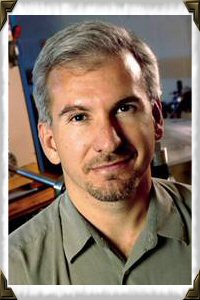
Greg Haugstad is technical staff member and director of the Characterization Facility (CharFac), a core research facility in the College of Science and Engineering at the University of Minnesota. The CharFac is part of the national Materials Research Facilities Network, via the University’s Materials Research Science and Engineering Center (MRSEC), and is affiliated with the University's Industrial Partnership for Research in Interfacial and Materials Engineering (IPRIME).
Dr. Haugstad received his B.A. in physics from Gustavus Adolphus College and Ph.D. in materials physics from the University of Minnesota following a research fellowship at 3M (composites for electromagnetic absorption or "stealth"). His doctoral research examined metal-semiconductor interfaces andheterostructures in ultrahigh vacuum utilizing synchrotron radiation photoelectron spectroscopy and cryogenic methods (physisorbed xenon as an electronic probe). After postdoctoral research with DuPont in the University's NSF Center for Interfacial Engineering, utilizing scanning probe microscopy (SPM) on soft materials relevant to photographic media, he joined the CharFac in 1994; here he continued SPM research in collaboration with industry and added managerial, teaching, service and development responsibilities in the CharFac's SPM and IBA labs (ion beam analysis including Rutherford backscattering and related techniques). His SPM research program has expanded to include (i) contrast mechanisms in SPM with emphasis on special methods, (ii) nanotribology, (iii) fundamental structure and properties of thin films comprised of polymers and/or small organic molecules (surfactants, crystalline semiconductors), and (iv) biofilms and biomedical coatings.
Greg is a frequent participant in interdisciplinary symposia and workshops spanning the above topics. He has collaborated with companies on technologies including medical X-ray imaging media, inkjet printing, adhesion/release media, personal care, biomedical device surfaces, filtration, and scanning probe instrumentation. His current industrial collaborations primarily involve biomedical device coatings. He also provides analytical services and consulting to a broader range of industrial and academic clients of the CharFac. He is a principal investigator in the Nanostructural Materials and Processes research program within IPRIME, and is a member of the graduate faculty of the Department of Chemical Engineering and Materials Science. His teaching includes a graduate minor curriculum in nanostructure imaging; a structural characterization lab for materials science juniors; a nanocharacterization capstone course for technical college students through the College of Continuing Education; basic and advanced training classes forCharFac users; and short courses in scanning probe methods including an annual course at the NSTI Nanotech conference.